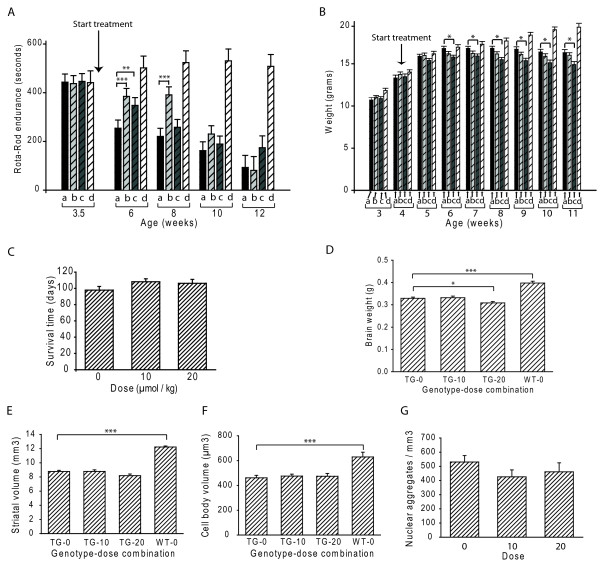Figure 3.
Everolimus provides early benefit against motor decline in R6/2 HD mice. A-B. Bars: solid black (a) = HD vehicle: cross-hatched; light gray (b) = low dose, dark gray (c) = high dose, white (d) = wild-type vehicle treated. WT to HD vehicle comparison significance bars are omitted for clarity. A. Low and high dose everolimus (10 and 20 μmol/kg, respectively) provide early, but not late, benefit against the decline in Rota-rod endurance in R6/2 HD mice. B. High dose everolimus has a small negative effect on body weight. Everolimus treatment does not improve measures of survival (C), brain weight (D), striatal volume (E), cell body volume (F) and nuclear aggregate density (G). Mice were dosed from 4-weeks of age. Shown are means + SE. X-axes show genotype-dose combinations (D-F). TG = transgenic, WT = wild type. n = 15-20 for behavior and survival (A-C), n = 12 for quantitative pathology (D-G). p-values: * = < 0.05

